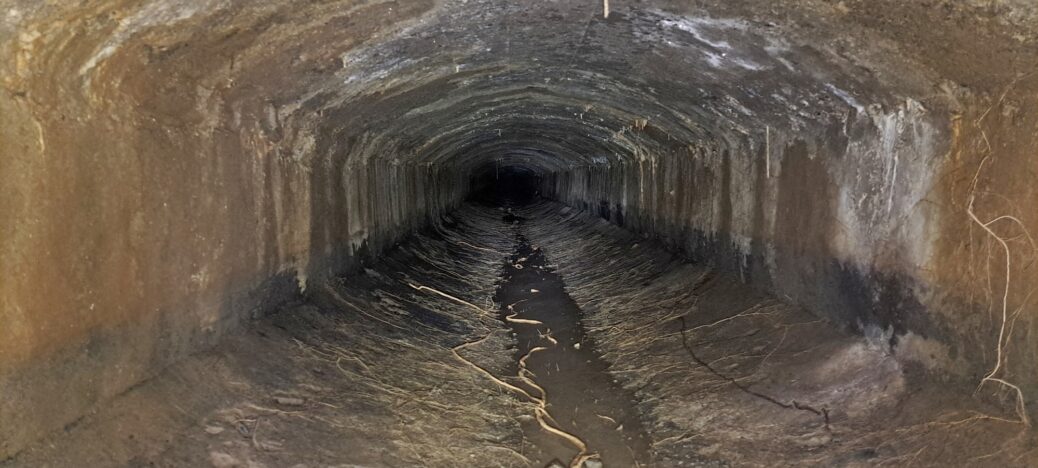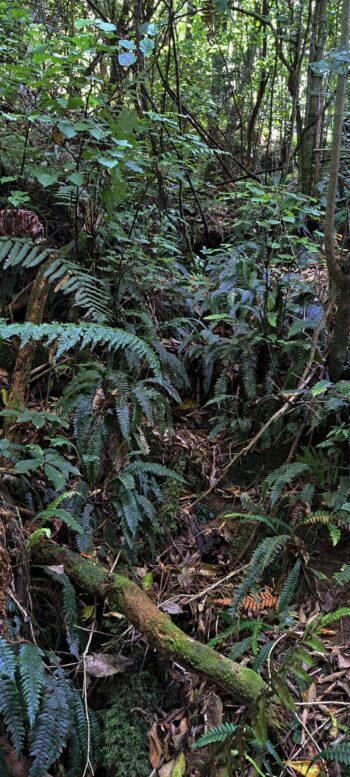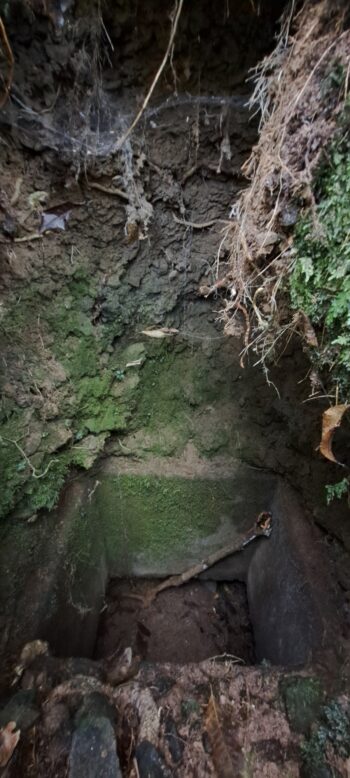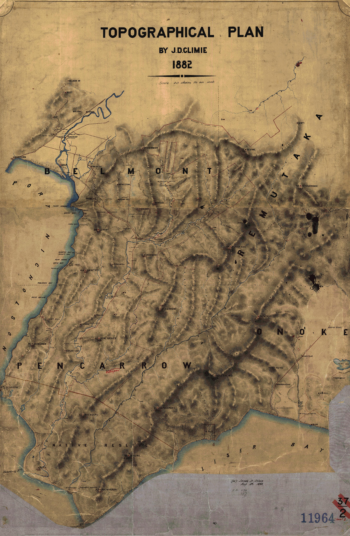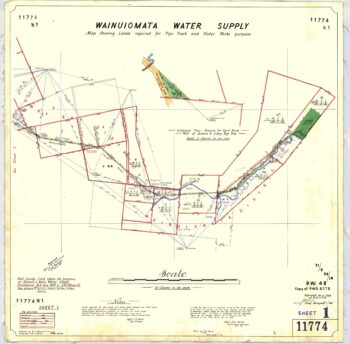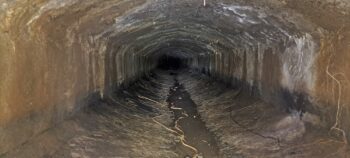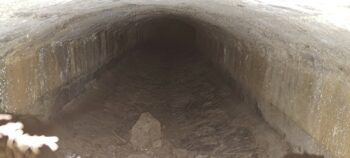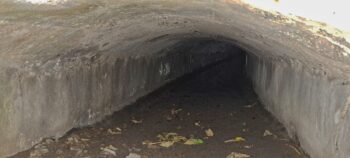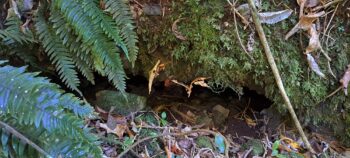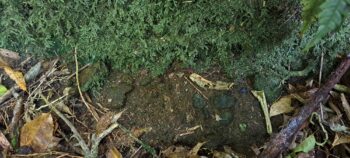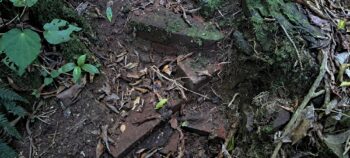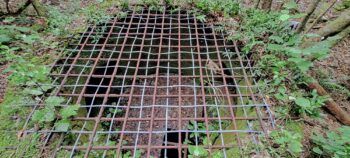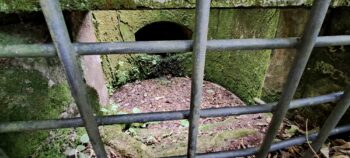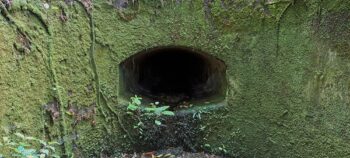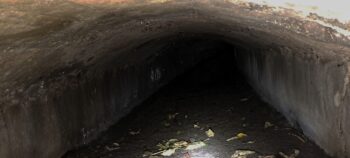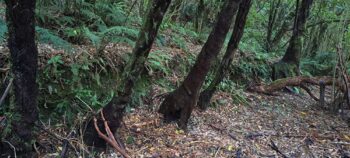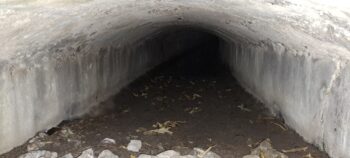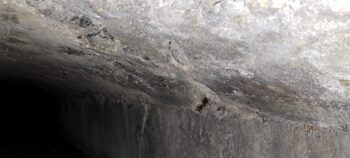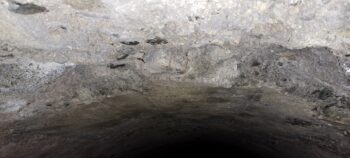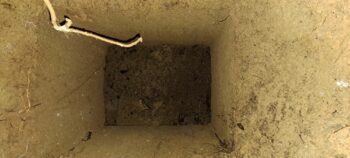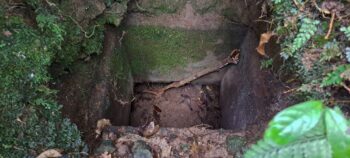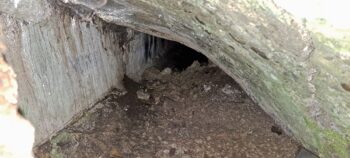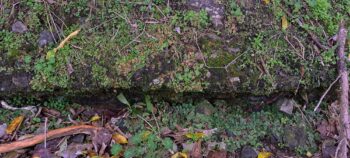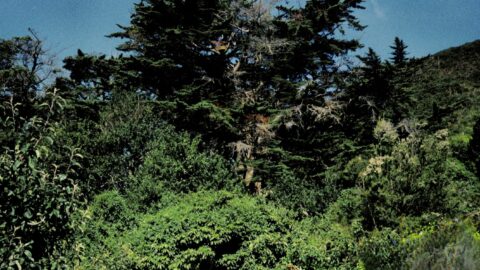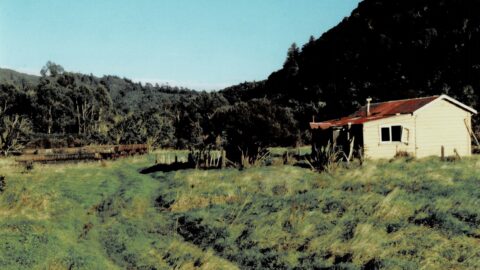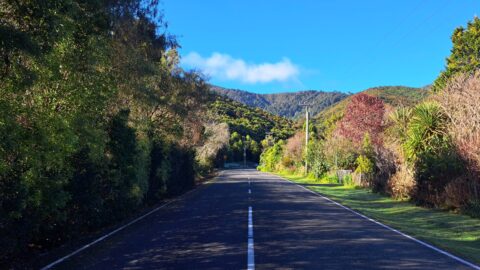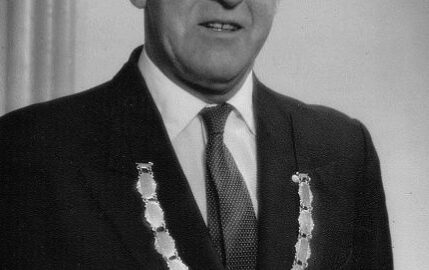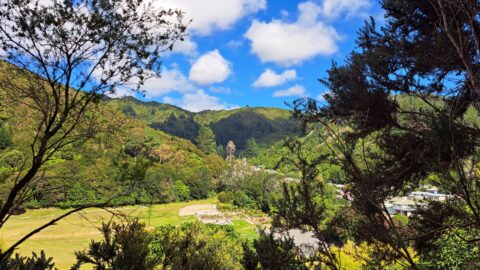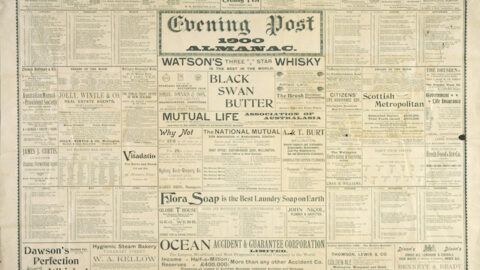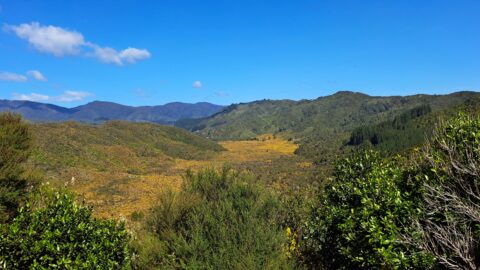In 1880, William Frank Oakes won a tender to construct a race between the old dam and a pipeline connection near what is now Richard Prouse Park and Reservoir Road. The tender for the race track was accepted in June 1880 at a cost of £233 15s, and completed on 24 March 1881. Oakes later secured the contract for the water race work valued at £7,439 7s 6d on July 1881 and was completed in January 1883. Other reports state as much as £15,000 being awarded for the total work which may include repairs.
The race was designed as a concrete covered race / culvert measuring 96 chains (1,920 metres) in length, 4 feet in width, and 2 feet 9 inches in height from the crown of the arch to the bottom of the invert. It was built along a sidling cut into the northern slope of the valley, tracing the natural curves of the hillside. It was situated above Reservoir Road, which functioned as a tramway at the time.
Engineering and Transporting Materials
A concrete mixing machine was installed at the dam site to facilitate the construction process which was carried out using Portland cement. It was mixed on-site using a machine under the direct supervision of the City Engineer. This machine featured an iron cylinder with a capacity of 100 cubic feet and was powered by the engine previously used in the steam launch “Perfect Cure”. Once mixed, the concrete was quickly transported down the Sinclair Tramway to required locations.
In addition to historic newspaper accounts documenting this effort, physical remnants can still be seen today. Above the water race ran a narrow track, originally cut into the steep hillside for its construction and later used for maintenance access. In the early 1920s, much of this track was buried when a private road was formed higher up on the same slope for the construction and servicing of the Orongorongo pipeline. Spoil from the excavation was cast down the hillside, covering large sections of the original track and many of the manholes that once provided access to the race. Smaller access tracks, linking the old tramway route (now Reservoir Road) to the water race, are still visible in places.
Construction of Colemans Tunnel
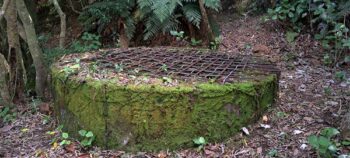 Coleman’s Tunnel was built around 1882 as part of the water race project. While the race including the tunnel was tendered and constructed by William Frank Oakes, its interior was lined with bricks by John Coleman, after whom the tunnel was named. The tunnel’s function was to collect water from the race at a pressure well, where it entered the tunnel and was then directed into the main pipeline to Wellington.
Coleman’s Tunnel was built around 1882 as part of the water race project. While the race including the tunnel was tendered and constructed by William Frank Oakes, its interior was lined with bricks by John Coleman, after whom the tunnel was named. The tunnel’s function was to collect water from the race at a pressure well, where it entered the tunnel and was then directed into the main pipeline to Wellington.
Manholes
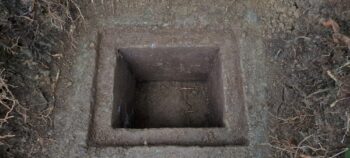 The water race featured several manholes designed to allow tunnel clearance and routine inspection. However, these were reportedly underutilised, and some believe this neglect led to persistent issues such as widespread leaking. Additional manholes were later added, spaced at roughly 2 chains (about 40 metres) apart. Today, three manhole locations are known.
The water race featured several manholes designed to allow tunnel clearance and routine inspection. However, these were reportedly underutilised, and some believe this neglect led to persistent issues such as widespread leaking. Additional manholes were later added, spaced at roughly 2 chains (about 40 metres) apart. Today, three manhole locations are known.
Problems with the Water Race
As early as 1887, Wellington’s city surveyor suggested replacing the water race and pressure well with cast iron pipes, estimating the cost at £7,000 due to large leaks. However, others argued that repairing the water race would be far cheaper by lining its sides and bottom with T. & G. totara timber. They also claimed that poor maintenance was the main issue and that if the manhole covers had been periodically removed to allow inspection of the race, only minimal repairs would have been needed.
Upon one inspection, a large leak of 25 feet was confirmed, but more water was being lost due to a faulty sludge channel sluice, coming direct from the reservoir itself.
Observations of the race were primarily conducted at both ends to assess the volume of water entering from the reservoir and the amount discharged at the well end. This allowed for a clear comparison to identify any loss along the race.
The recorded measurements were as follows: 1,868,400 gallons of water entered the race from the reservoir, while 1,701,000 gallons were discharged at the well. This reveals a discrepancy of 167,400 gallons, indicating water loss likely due to seepage or minor structural inefficiencies along the course.
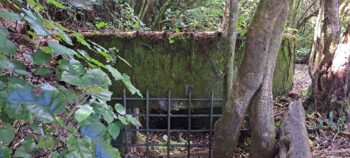 Despite its intended purpose and differing opinions about the effectiveness of the race, it was found to be inefficient with a further problem of bywash / overflow at the tunnel which required turning the water flow on and off to regulate. As for the leaks, they were were more about neglect than defect, according to some reports.
Despite its intended purpose and differing opinions about the effectiveness of the race, it was found to be inefficient with a further problem of bywash / overflow at the tunnel which required turning the water flow on and off to regulate. As for the leaks, they were were more about neglect than defect, according to some reports.
It was later realised that if the pipes had been laid 10 feet lower to the reservoir, there would have been no need to periodically shut off Wainuiomata’s water supply to prevent the well from overflowing. The natural river flow, combined with the additional reservoir storage, would have been sufficient to meet demand, while maintaining consistent water pressure. Installing lower pipes would also have been more cost-effective than constructing the race and well.
Replacing the Water Race
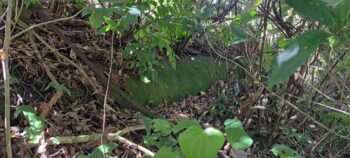 On 24 September 1902, the original water race and Coleman’s Tunnel were officially decommissioned and replaced by a 30-inch cast-iron pipeline. This new pipeline extended from the Lower Dam reservoir and connected directly to the existing main that crossed the Wainuiomata River. From there, it continued for approximately 3.5 miles (5.6 km) towards the city’s distribution system. The upgrade not only eliminated the structural vulnerabilities of the ageing race and tunnel, but also provided improved water pressure and reliability, thanks to the sealed and pressurised nature of the pipeline system.
On 24 September 1902, the original water race and Coleman’s Tunnel were officially decommissioned and replaced by a 30-inch cast-iron pipeline. This new pipeline extended from the Lower Dam reservoir and connected directly to the existing main that crossed the Wainuiomata River. From there, it continued for approximately 3.5 miles (5.6 km) towards the city’s distribution system. The upgrade not only eliminated the structural vulnerabilities of the ageing race and tunnel, but also provided improved water pressure and reliability, thanks to the sealed and pressurised nature of the pipeline system.
Legacy of the Early Wainuiomata Waterworks
Although the water race, tunnel, and well were abandoned around the turn of the 20th century, these still remain in existence today. Most are now buried, with only a few sections left visible. Over time, these early systems were replaced by modern pipelines and treatment plants, yet their legacy remains a significant part of Wainuiomata’s water supply history.

